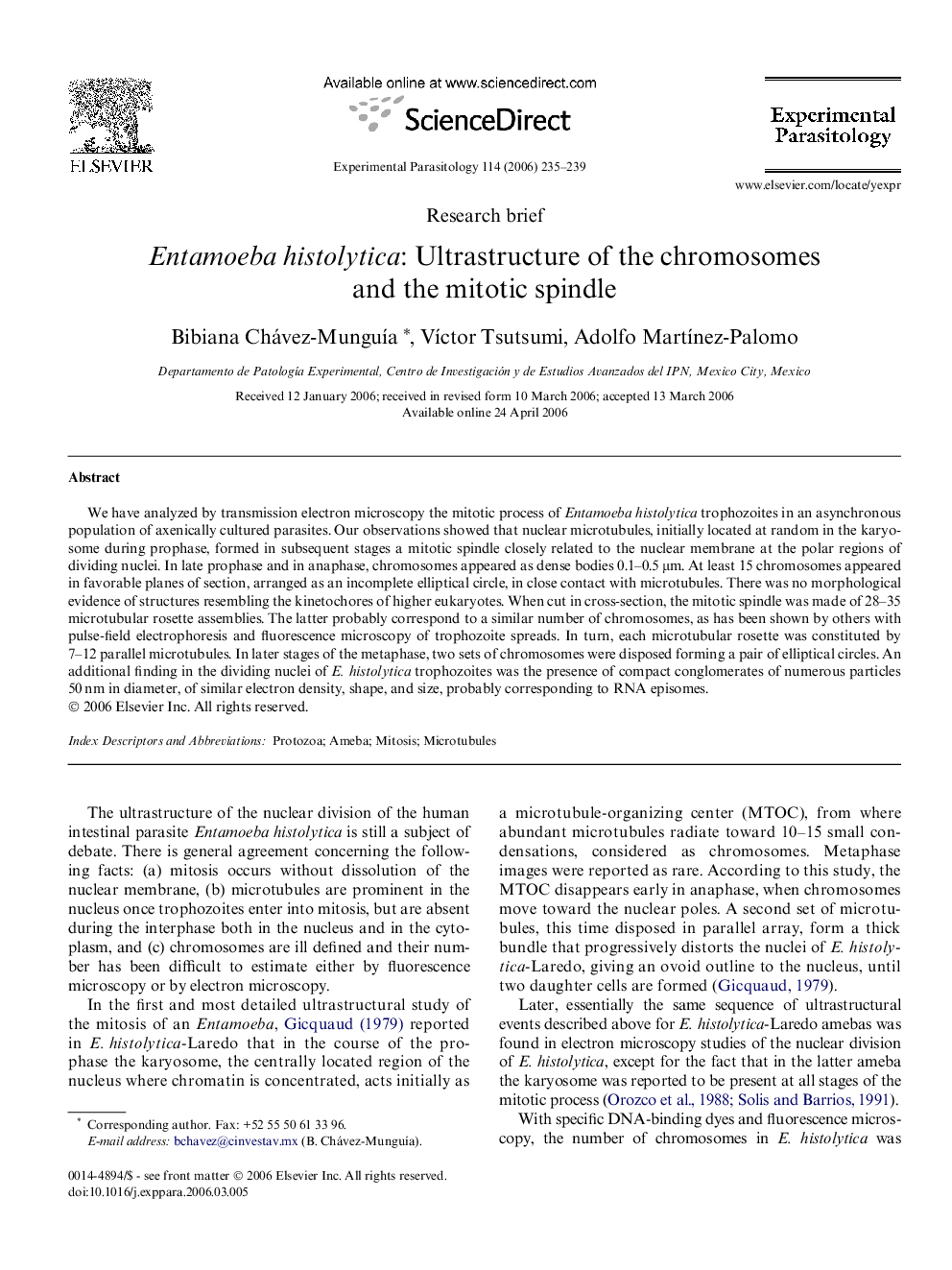| Article ID | Journal | Published Year | Pages | File Type |
|---|---|---|---|---|
| 4372164 | Experimental Parasitology | 2006 | 5 Pages |
We have analyzed by transmission electron microscopy the mitotic process of Entamoeba histolytica trophozoites in an asynchronous population of axenically cultured parasites. Our observations showed that nuclear microtubules, initially located at random in the karyosome during prophase, formed in subsequent stages a mitotic spindle closely related to the nuclear membrane at the polar regions of dividing nuclei. In late prophase and in anaphase, chromosomes appeared as dense bodies 0.1–0.5 μm. At least 15 chromosomes appeared in favorable planes of section, arranged as an incomplete elliptical circle, in close contact with microtubules. There was no morphological evidence of structures resembling the kinetochores of higher eukaryotes. When cut in cross-section, the mitotic spindle was made of 28–35 microtubular rosette assemblies. The latter probably correspond to a similar number of chromosomes, as has been shown by others with pulse-field electrophoresis and fluorescence microscopy of trophozoite spreads. In turn, each microtubular rosette was constituted by 7–12 parallel microtubules. In later stages of the metaphase, two sets of chromosomes were disposed forming a pair of elliptical circles. An additional finding in the dividing nuclei of E. histolytica trophozoites was the presence of compact conglomerates of numerous particles 50 nm in diameter, of similar electron density, shape, and size, probably corresponding to RNA episomes.
